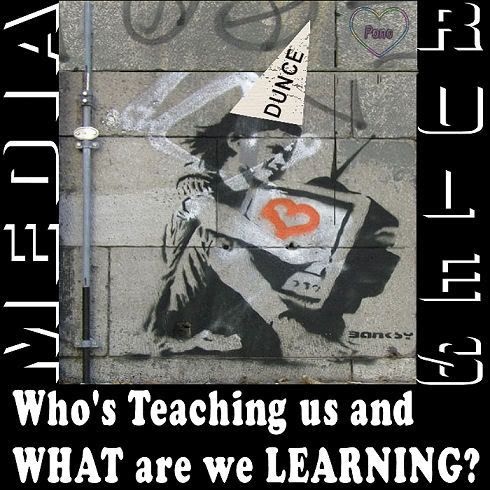PEARL HARBOR — Busy days at the USS Arizona Memorial visitor center and museum — and that's about every day for one of the most visited attractions in the state — are like bumper car rides at the fair.
Those heading to the bathroom run into those heading to the bookstore, who run into those looking for a sandwich, who run into those waiting for the center's 20-minute film to begin.
"So many people," said Octavio Alvarado, a honeymooner from Mexico, as he sat on a bench with his wife, Athaly.
A $52 million project to build a new visitor center and museum is expected to begin by the end of the year and bring some relief to the memorial, where more than 1.3 million people show up annually at a facility that was designed for 750,000.
The National Park Service expects to complete the upgrade by Dec. 7, 2010, the 69th anniversary of the Japanese surprise attack.
The campuslike design will spread new buildings and shaded walkways over a much larger area of the Arizona Memorial's 17.4 acres of shoreline than the current facility.
Only the theaters from the existing facility, built in 1980, will remain.
In doing so, the park service will increase the visitor center and museum's 16,000 square feet to 23,000 square feet.
Museum exhibit space will more than double for display of never-before-seen artifacts, including a 1.1-inch anti-aircraft gun that came off the sunken USS Utah, and a 5- by 9-foot riveted chunk of the USS Arizona's superstructure, officials said.
A bloodied white jumper worn by a sailor — a visceral reminder of the day's cost — also may be added to the display.
More of the Dec. 7, 1941, story will be told in the "Road to War," "O'ahu 1941," and "Attack and Aftermath" exhibits. Plans call for a scale-model Japanese aircraft to be poised over the attack exhibit.
The remake of the visitor center was originally scheduled to begin last year and be completed in 2009, but the start was delayed a year when the roof design was changed.
The Pearl Harbor Memorial Fund is close to reaching its goal of raising the $52 million needed for the project, and President Bush is expected to declare the USS Arizona Memorial a national monument, possibly along with Midway Atoll and Wake Island.
That's the good news, as far as the future of the museum is concerned.
Noisy days ahead
The bad news is that the National Park Service somehow has to juggle two years of construction work while still accommodating up to 1.6 million visitors a year.
"Our goal is to stay open throughout this process," said Eileen Martinez, a National Park Service spokeswoman.
The Navy, which will oversee the construction contract, said approximately 187 piles need to be driven into the ground to act as a foundation for the buildings and prevent the sinkage that plagued the existing facility.
The 16.5-inch thick prestressed octagonal concrete piles will be driven into the ground anywhere from 125 to 200 feet, with an average depth of approximately 185 feet.
The contractor will pre-drill a hole about 10 feet deep, and then use a crane to install the first section of pile, the Navy said. A pile-driving hammer will be used to drive down the pile to its required depth.
How that noise will affect the solemnity of a visit to the gravesite of many of the Arizona's 1,177 crew members who lost their lives on Dec. 7, 1941, remains to be seen.
"The experience is the memorial," Martinez said. "It's out on the water, and it's far enough away that we hope it (the pile driving) wouldn't have as much of an impact as when you are walking by the site. That's the hope."
National Park Service officials in 2007 said crews possibly could keep noise to a minimum by pile-driving at night or only intermittently during the day — in between showings of the 20-minute film that outlines the Dec. 7, 1941, attack prior to the boat ride to the Arizona Memorial.
Naval Facilities Engineering Command Pacific last week said: "We anticipate there will be some construction impact to visitor operations, but at this time we can't speculate on the extent of those impacts. Once the contract is awarded and a construction schedule is finalized with the contractor, any impact and its mitigation will be clarified."
Aug. 7 was the deadline to bid on the project. The Navy also said that in accordance with federal acquisition regulations, the names of the bidders and the specific number of proposals received cannot be released until a contract is awarded.
That award is expected between October and December, the Navy said.
Visitor center sinking
The current visitor center was built on unstable gravel fill and pavement that had served as the ferry landing for Ford Island before the Admiral Cleary Bridge was built.
Since then, the visitor center foundation has sunk more than 30 inches in places, requiring the use of jacks to keep it level. The theater was determined to be on relatively stable footing, and it will be retained, but it will be renovated.
Tom Fake, the project director for the new visitor center, said a canvas-type roof structure previously was envisioned for the new campus. "But from a durability standpoint, it wouldn't have worked," he said.
PVC roofing now will be used with steel roof decking in a new architectural design with a lot of concave and convex elements.
"It's achieving the same concept of shade," Fake said, adding that the design by the Portico Group out of Seattle accelerates air flow like a wing.
Fake said one of the concepts the architects had with the design was that of a monkeypod tree, with a canopy of shade and open air flow below. The design also mirrors the curve of the Arizona Memorial, he said.
Under that canopy will be more seating, more bathrooms, and new exhibits. There will be a vending area with sandwiches and drinks, but not the cooked meals that were offered at a for-profit tent operation that has since closed.
The nonprofit museums on the site include the Arizona Memorial, the USS Bowfin Submarine Museum and Park, the Battleship Missouri Memorial and the Pacific Aviation Museum-Pearl Harbor.
A ticketing office at a new entryway will provide information and tickets for all four of the museums, and a large waterfront lawn with a pavilion will allow a return of public Dec. 7, 1941, observances to the visitor center.
Nearby Kilo Pier at Pearl Harbor has been used for the past several years because the lawn at the visitor center was not large enough.
Arizona Memorial historian Daniel Martinez said a big plus will be a dedicated education building offering programs for students and the community.
"We want to make sure that the local community, in particular, will see the (visitor center and museum) as their place as well," Martinez said. "Too long this site has been interpreted by a lot of local people as the place where tourists go."
'Room to grow'
Part of that connection will be made in telling more of the story of the attack on O'ahu — including its citizenry, Martinez said.
Laurie Moore, director of development with the Arizona Memorial Museum Association and Pearl Harbor Memorial Fund — the fundraising arm for the Arizona Memorial — said about $34 million has been raised, and all but about $500,000 of the remainder to reach the goal of $52 million is expected from federal sources.
"It's a great example of a public-private partnership, and we'd really like to ask private citizens to help us finish off the last half million," Moore said.
Visiting the Arizona center recently, Jim Robinson, 54, of Texas, said one of the first things he noticed was how small it was.
He and his wife, Mary, were there to pay their respects, and Jim had changed into a green button shirt because he didn't want to wear a T-shirt to the battlefield gravesite.
Now, the National Park Service plans to pay a little respect back, building a bigger and more comfortable visitor center.
Shown some artists' renderings of the new design, Jim Robinson said, "I'm impressed. I believe you have to have room to grow."


 This is the symbol the "shield" that I have been given which I carry on my arm. This is a symbol that incorporates the teachings I have learned, the shield of One Earth One Tribe. This is the shield of the new warrior, the Rainbow Warrior. Not one that kills but one that heals. One that's mission is to heal Mother Earth and all of her inhabitants with love with ALOHA.There are several meanings that are incorporated into this shield.The turtle is a symbol which has many meanings in the Native American culture. Here the turtle represents "Mother Earth".It also symbolizes a long meaningful life.In cultures all over the world water is a symbol of life. Here, the waves of the water symbolize constant life.The man on the turtles back is an ancient Hawaiian petroglyph. "Rainbow Man" depicts a man with a rainbow resting on his shoulders. The symbol represents each person's responsibility to 'shoulder' the task of protecting Mother Earth.Please join me in the task of returning Mother Earth to the purity of her first days. This is a great task but one that I know we can accomplish together. Help to bring others to The Point of Understanding. Help heal all life, for we are all connected, we are all one.UA MAU KE EA O KA 'AINA I KA PONO(The life of the land is preserved in righteousness.)These are the teachings that saved me, this is the life I now lead.I owe the Maoli Kanaka my life. I am a Hanai son of Hawai'i a modern warrior a "Rainbow Warrior", a Kumu of Aloha. Preserve the language, preserve the culture, preserve the 'aina (land), live in balance, live aloha.E ho'omaika'i O la'a kea me ke aloha pau oleBlessings of sacred light and everlasting love.Makaio Lukela (Matthew Russell)Kanaka Hana (a servant of Hawai'i)
This is the symbol the "shield" that I have been given which I carry on my arm. This is a symbol that incorporates the teachings I have learned, the shield of One Earth One Tribe. This is the shield of the new warrior, the Rainbow Warrior. Not one that kills but one that heals. One that's mission is to heal Mother Earth and all of her inhabitants with love with ALOHA.There are several meanings that are incorporated into this shield.The turtle is a symbol which has many meanings in the Native American culture. Here the turtle represents "Mother Earth".It also symbolizes a long meaningful life.In cultures all over the world water is a symbol of life. Here, the waves of the water symbolize constant life.The man on the turtles back is an ancient Hawaiian petroglyph. "Rainbow Man" depicts a man with a rainbow resting on his shoulders. The symbol represents each person's responsibility to 'shoulder' the task of protecting Mother Earth.Please join me in the task of returning Mother Earth to the purity of her first days. This is a great task but one that I know we can accomplish together. Help to bring others to The Point of Understanding. Help heal all life, for we are all connected, we are all one.UA MAU KE EA O KA 'AINA I KA PONO(The life of the land is preserved in righteousness.)These are the teachings that saved me, this is the life I now lead.I owe the Maoli Kanaka my life. I am a Hanai son of Hawai'i a modern warrior a "Rainbow Warrior", a Kumu of Aloha. Preserve the language, preserve the culture, preserve the 'aina (land), live in balance, live aloha.E ho'omaika'i O la'a kea me ke aloha pau oleBlessings of sacred light and everlasting love.Makaio Lukela (Matthew Russell)Kanaka Hana (a servant of Hawai'i)


 http://www.honoluluadvertiser.com/apps/pbcs.dll/article?AID=/20080820/NEWS08/808200388/1001
http://www.honoluluadvertiser.com/apps/pbcs.dll/article?AID=/20080820/NEWS08/808200388/1001




 LEARN THE TRUTH!!
LEARN THE TRUTH!!
